Use these tactics
Let’s explore these tactics with an example: Pip’s Cafe
The barista at Pip’s Cafe is feeling unsure, despite their passion for coffee, they often find themselves second-guessing their skills. See below how Pip’s Cafe barista uses these tactics to boost their confidence.
1
Use Winventory to celebrate your wins
Use Winventory to celebrate your wins
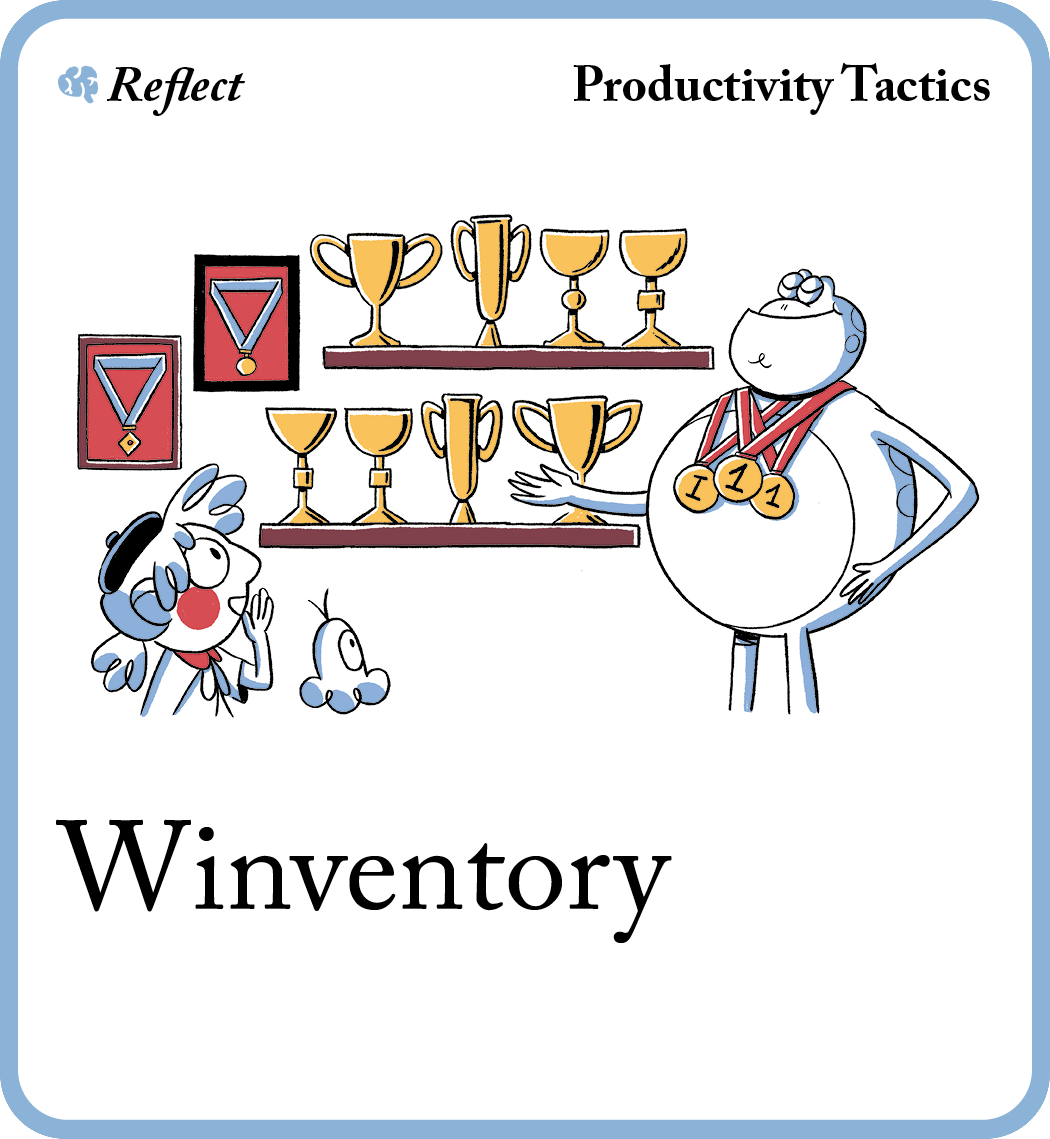
👤 Who is needed? Just you
🧠 What’s the goal? List and celebrate your wins to stay motivated.
👀 Why is this important? Focus on the positives and celebrate even the smallest victories, so you’ll be more inclined to continue to pursue your goals and develop beneficial habits. Use this tactic weekly, monthly or annually.
“Success is the sum of small efforts, repeated day in day out.”– Robert Collier
💡 Tip: keep your Winventory handy and review it whenever you need a confidence boost.
Instructions
- Choose your timeframe – decide if you want to reflect on your wins from the past week, month or year.
- Grab a pen and paper, open a digital document, or use a dedicated app to list your wins. The key is to have a designated space to record your accomplishments.
- Think back on your chosen timeframe and list all the wins you can remember. These can be outcomes you achieved, habits you maintained, praise you received or challenges you overcame. Don’t be shy; no win is too small!

- Take a moment to review your list and appreciate your achievements.
⬇️ In the next tactic, with these this positive energy, do SWOT Analysis.
2
Use SWOT Analysis to identify strengths, weaknesses, opportunities
Use SWOT Analysis to identify strengths, weaknesses, opportunities

👤 Who is needed? Just you
🧠 What’s the goal? Identify strengths, weaknesses, opportunities and threats for a desired end-state.
👀 Why is this important? Evaluate your current likelihood of success relative to an objective. Understand what’s impeding you, and what you can improve on.
💡 Tip: take a moment to celebrate your strengths. Know that to clearly lay out your range of weakness to strengths gives you agency for making changes in your life.
Instructions
- Create a quadrant as shown on a large surface.
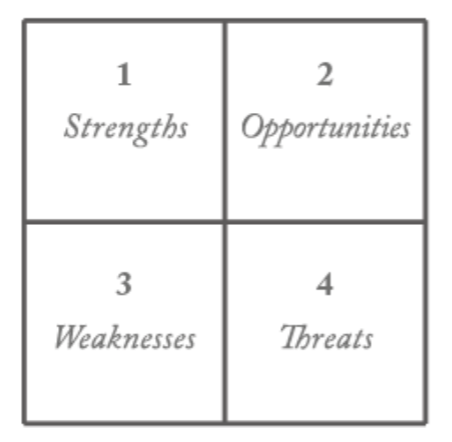
-
Spend 5-10 minutes writing down all the Strengths in respect to the desired end-state, one per sticky note.
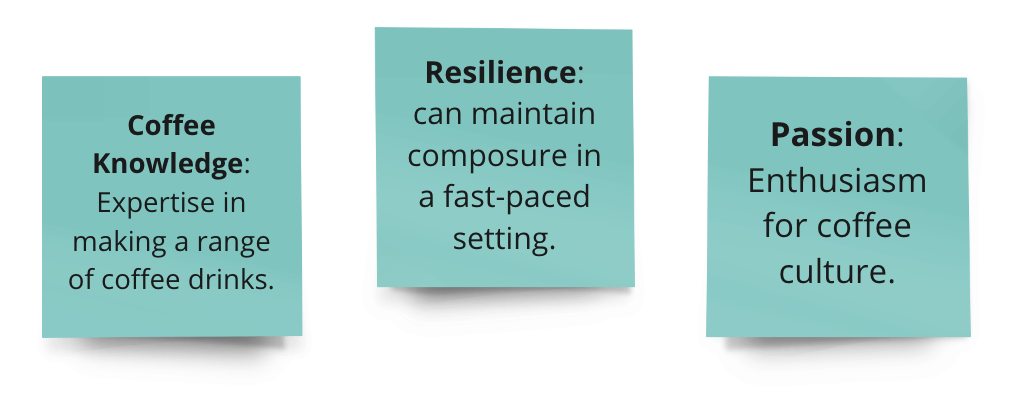
-
Now look at your Opportunities section and decide for yourself which part do you want to action towards positive change.
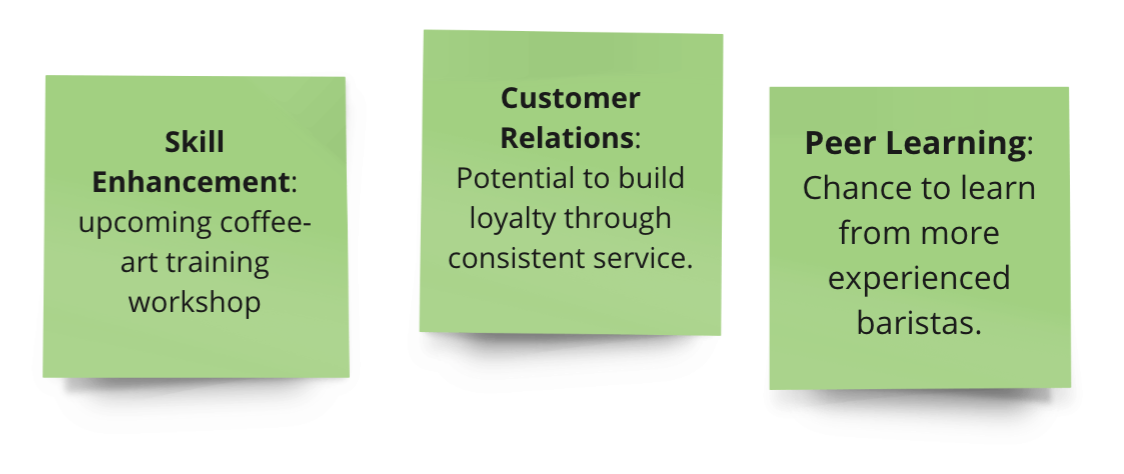
Frame this into a “How might I…” statement.
Example: How might I learn from more experienced baristas?
⬇️ In the next tactic, take your How might I... statement and use it with Goal, Signal, Metric.
3
Use Goal, Signal, Metric to set measurable goals
Use Goal, Signal, Metric to set measurable goals
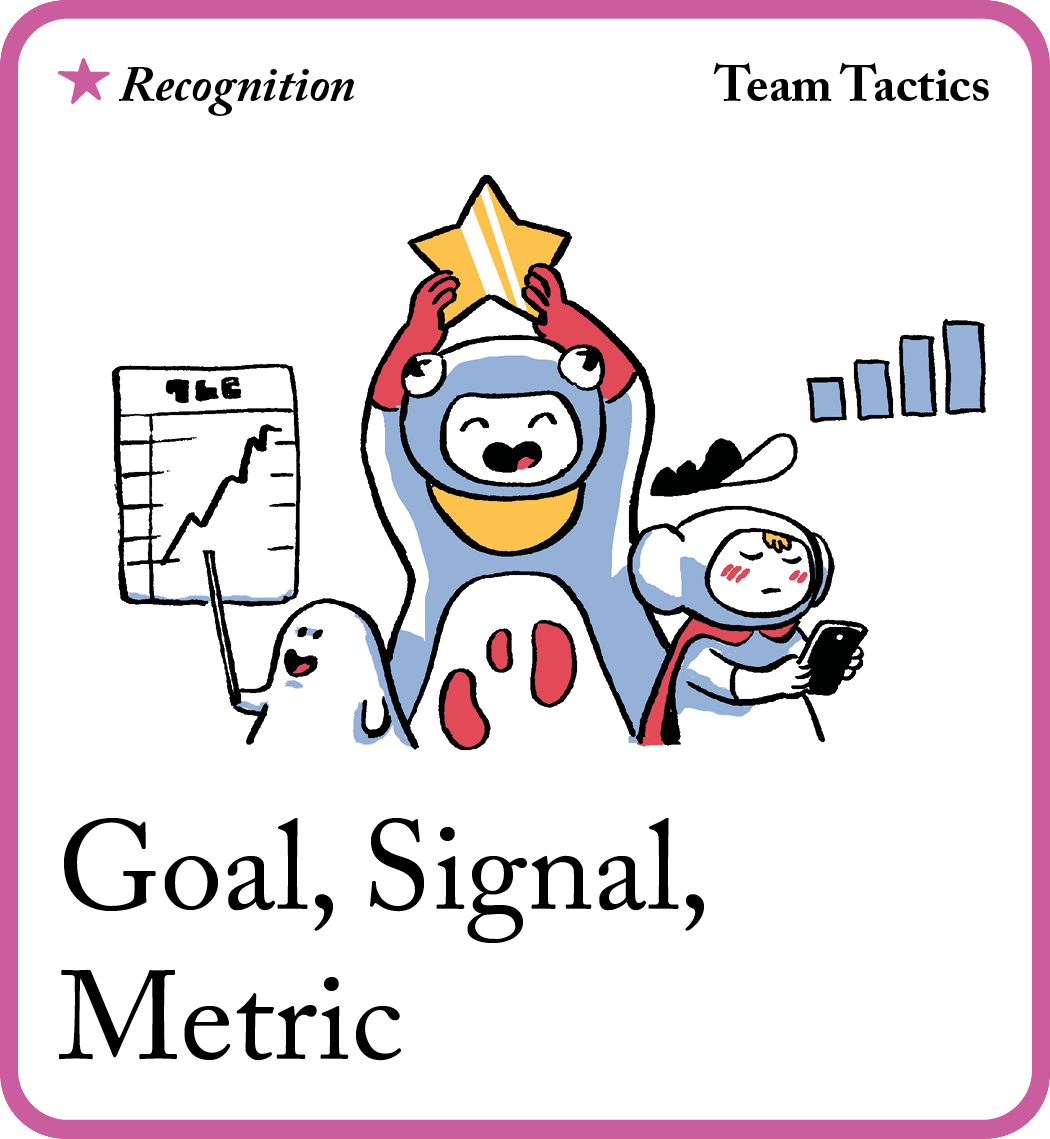
👤 Who is needed? Just you
🧠 What’s the goal? Know the impact you are having.
👀 Why is this important? Show yourself how your work is contributing to the team’s goals, and the value you have.
“If you can’t measure it, you can’t improve it.” – Peter Drucker
💡 Tip: keep a dedicated journal to consistently track your goals, signals, and metrics.
Instructions
- Write down your How might I… in front of you.
Example: How might I learn from more experienced baristas? Now change it into an action statement with more specifics.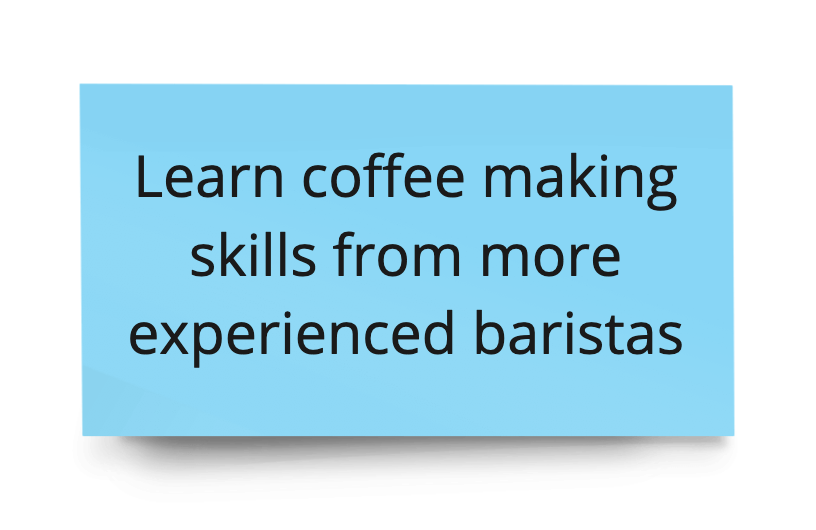
-
Discuss which signals would show that you are going in the right direction. Write them down.
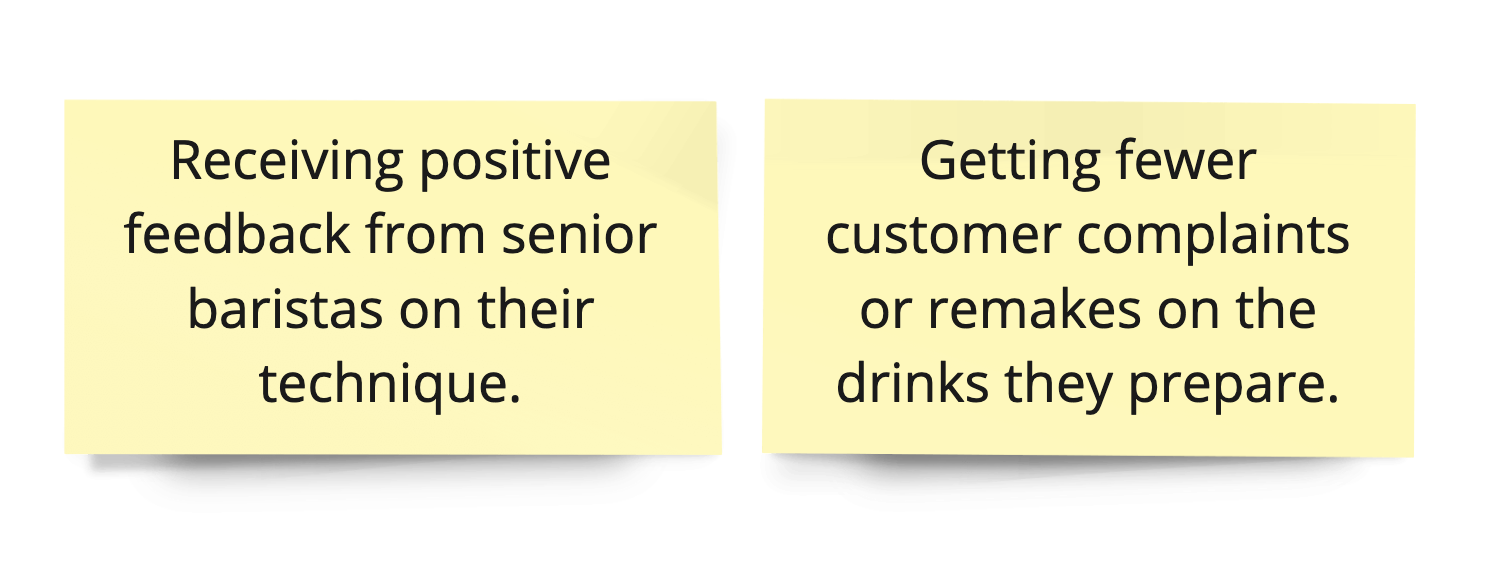
-
Consider your goals and signals: what metrics could you set that would show you’ve reached your goal? Metrics should be: Who, What and When.
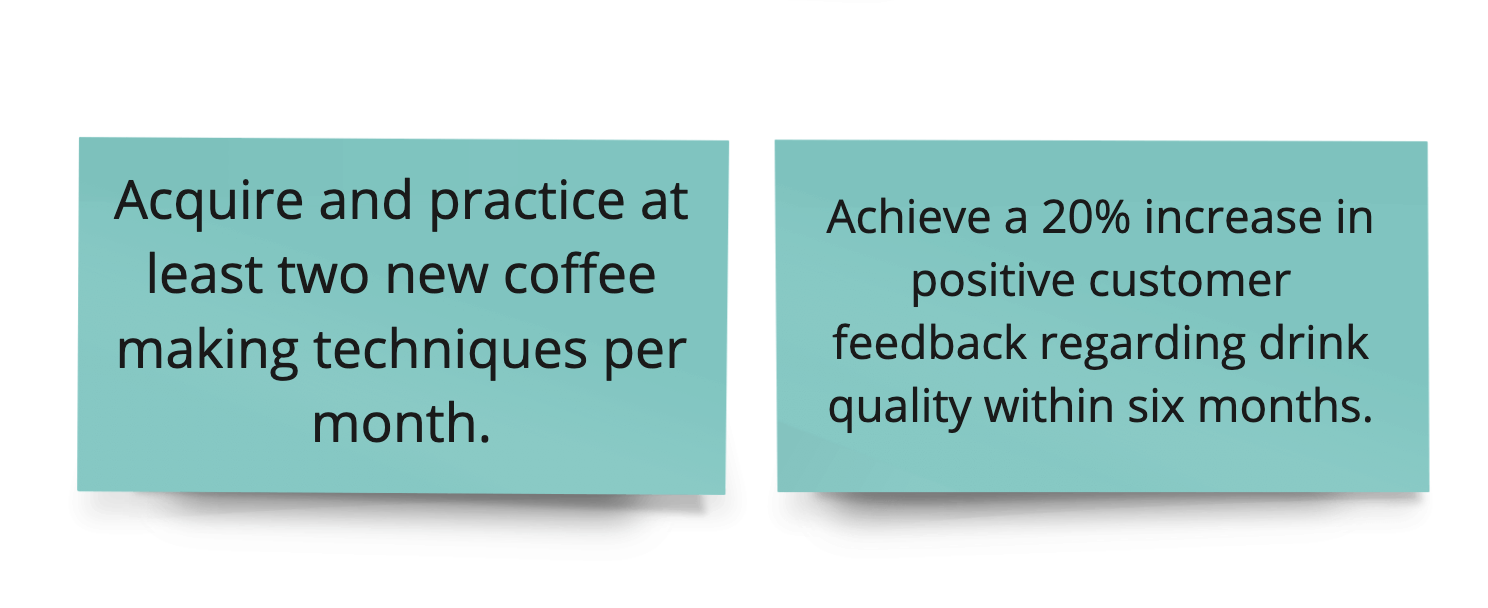
-
Keep track of your goals, signals and metrics over time; consider sharing them for the entire team to see.
⬇️ Now that your are done all three tactics, keep all of what you just wrote somewhere for you to see daily to remind you of your capabilities, and to also keep you on track towards your goals.
What ways can I use this recipe?
- The complete loop: this means short, separate sessions for each of the three tactics in order
- Ongoing process: use these tactics regularly and consistently to maintain a great working environment
Some tips
- Set Small, Achievable Goals: Break down complex tasks into smaller, manageable steps and set goals that can be realistically achieved in a short time. Celebrate these small victories to build confidence and create a positive reinforcement loop.
- Seek Constructive Feedback: Regularly ask for feedback from both colleagues and customers. This will not only provide insight into areas of improvement but also highlight strengths, which is essential for building self-assurance in one’s abilities.
What next?
Congratulations! You have completed a round of How to boost your confidence at work !
You have celebrated your wins, identified your strengths, weaknesses, opportunities, and set measurable goals. Now it is time to start making actions towards these goals, and to keep celebrating yourself daily!

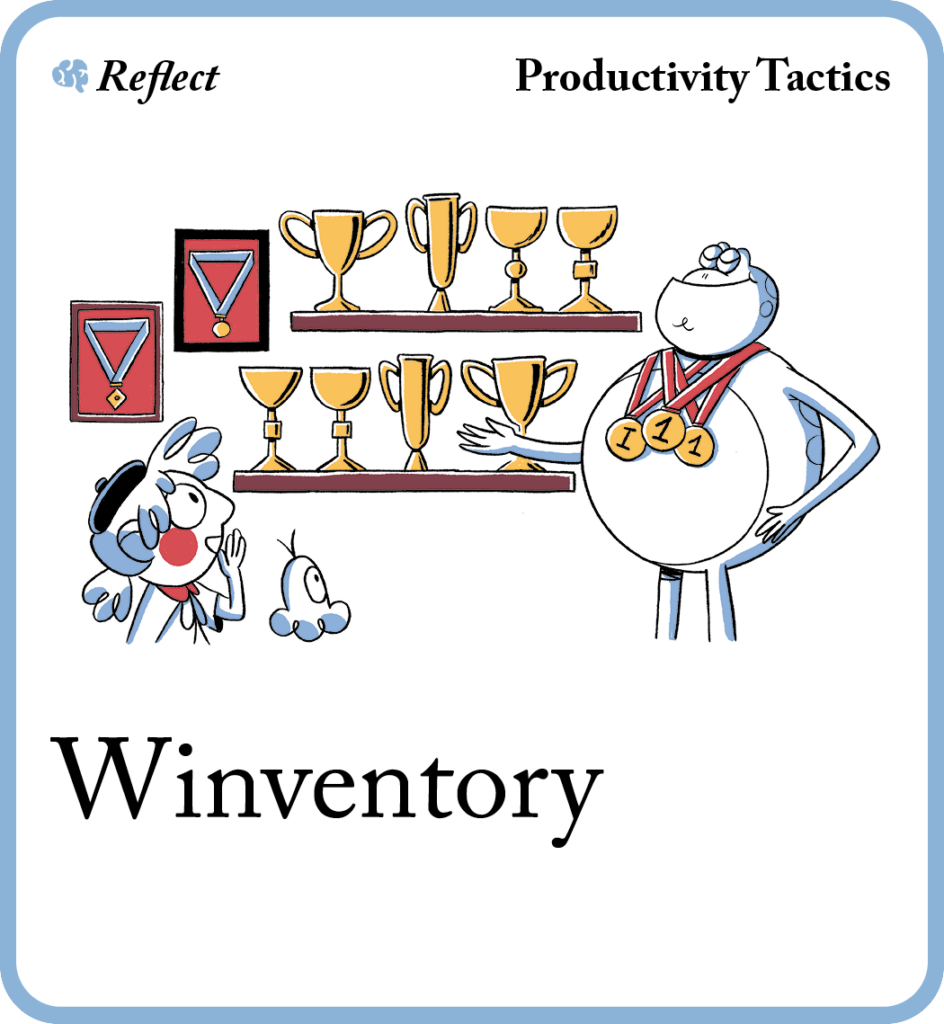
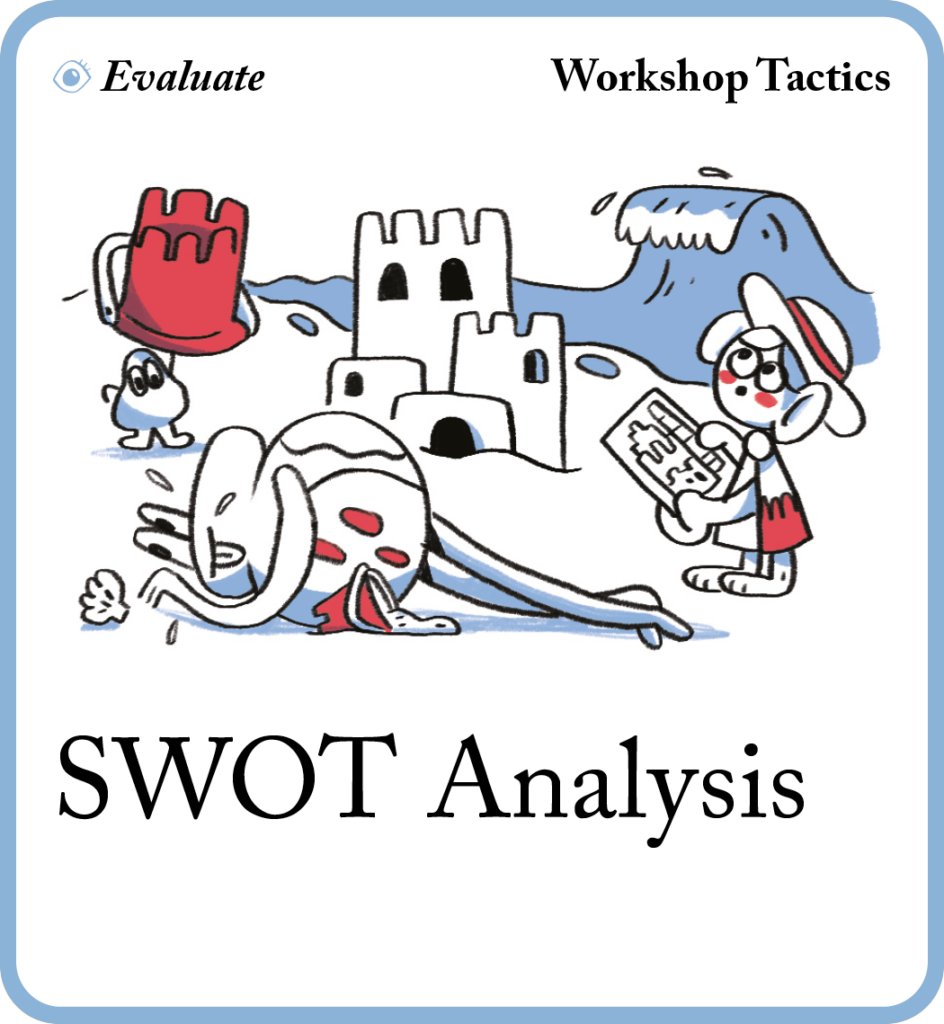




One of the toughest measurements is the “wins”; much of what I do is behind the scenes. Couple that with having been a consultant for several years, calling out my clients’ wins, taking apart my effort, and calling them out as wins is a challenge now the shoe is on the other foot.
This is brilliant! Would love to have a miro template of these sticky notes!
Here’s a general comment about the decks, which I have found to be useful. I have the full set and one problem is that they are not distinguishable from each other once out of their boxes.
So the examples you show above, with ‘Team Tactics’ or ‘Workshop Tactics’ labelled in the upper right of the card are not on the actual cards. Once you start mixing decks it gets very difficult to be clear on which card belongs to which set.
Hi Gordon, thank you for your insight, it is very valuable. We have also noticed this and are working to improve this for future decks. Thank you.
Hi Naomi
another thing you might consider… I work with another deck of cards [system] and each deck has a unique number which is printed on all the cards for ease of sorting to return them to their boxes. Helpful when using card decks with groups of people and finding orphan cards, easy to return to the right deck.
Thank you for you insight Christina! I will pass the idea along.
Hi team, I’m using Pipdecks for work (community events facilitator at a charity) and for myself and for helping my teen with his a levels – and more importantly helping him to enjoy problem-solving and develop approaches and tools that will help him explore his year off.
I love the productivity cards you’ve shared here – the need for me is that the studying tools taught at college are aspirational (create a revision timetable, structure your day) but they don’t tackle the emotional overwhelm and assume you know how to break this mammoth task (revision timetable) into smaller steps, and how to link that to the personal experience (confidence building, reflective learning etc).
I’ve tried Skillshare courses (making notes and sharing them with him), but we’ve both crashed and burned…
So I think Pip Deck cards are the way to go with this. There is a real need in the post covid student audience – productivity tools and experiments that are short, simple steps (all laid out). I’m dabbling with the idea of getting this deck for me, and to see if using it will inspire my son to dabble too (he’s in year 13 panic revision at the moment). If we can make it work for us, I’m going to encourage his college to use these to develop their study skills resources.
I love your way of working – and I’m aspiring to use my Workshop tactics more, and building up my Miro skills at the moment.
Love the videos too! I need to see how things work before I give it a go (“What does good look like”) so thank you for helping me to get my head around this too
Do you need all three decks to work on your self esteem?